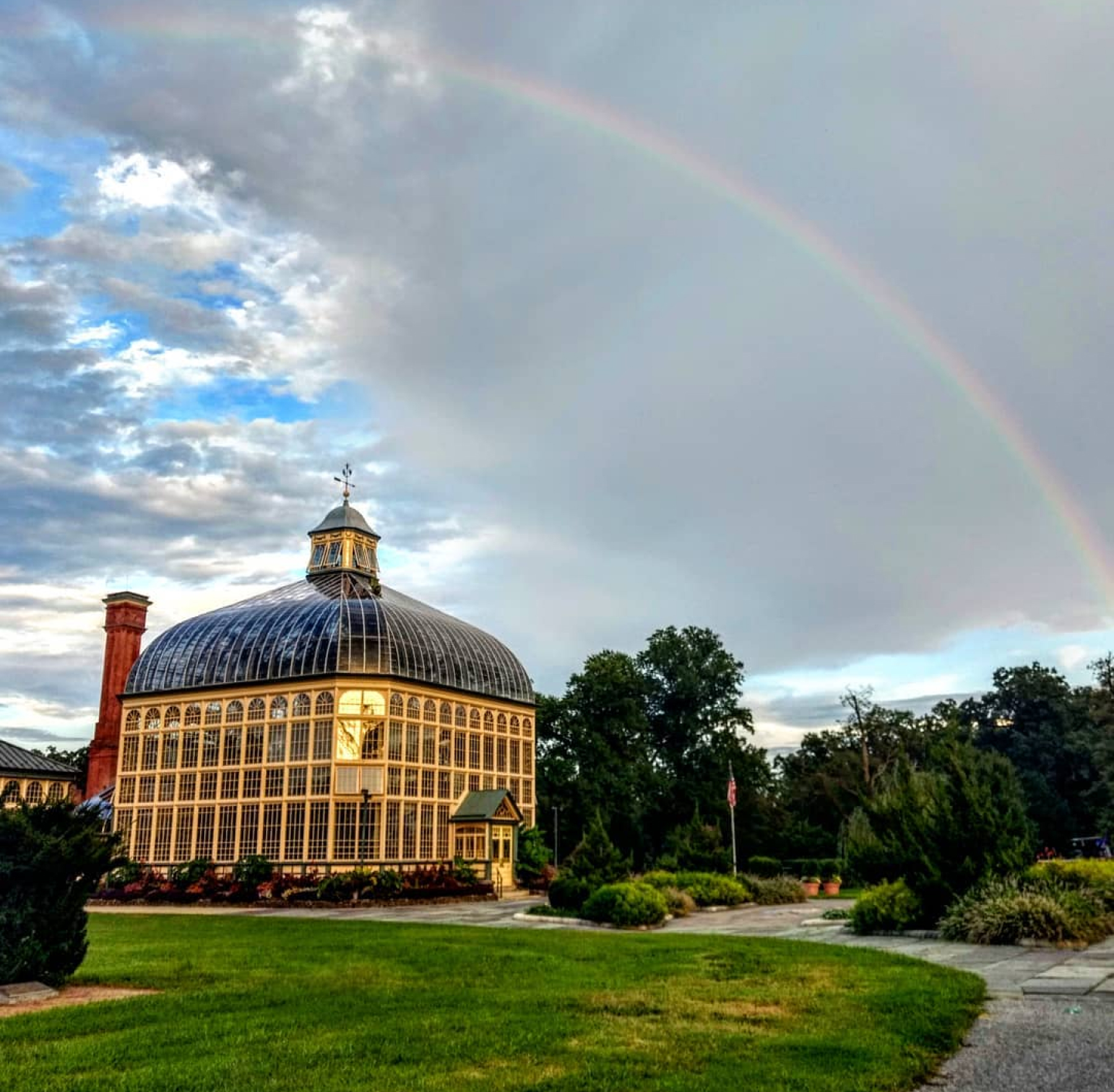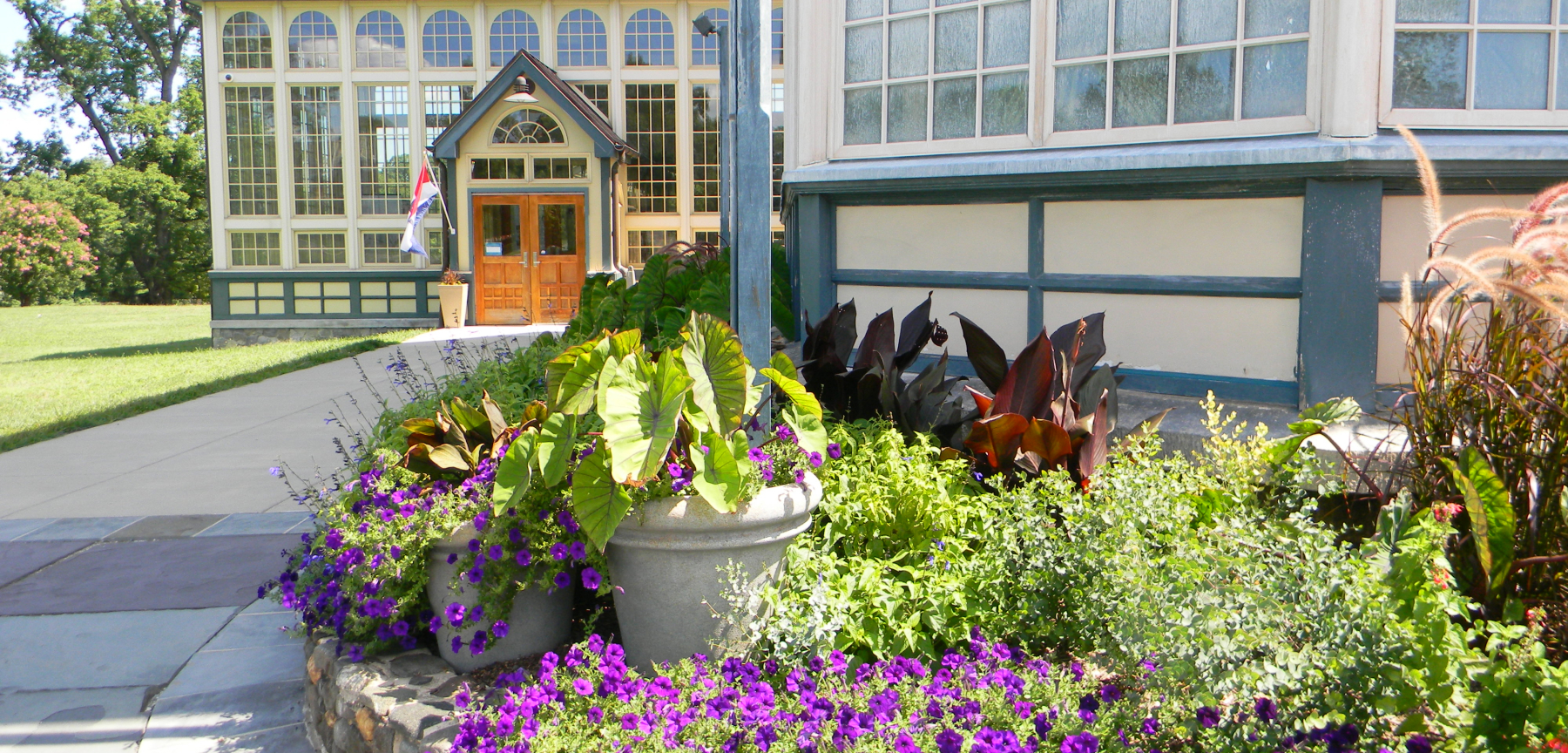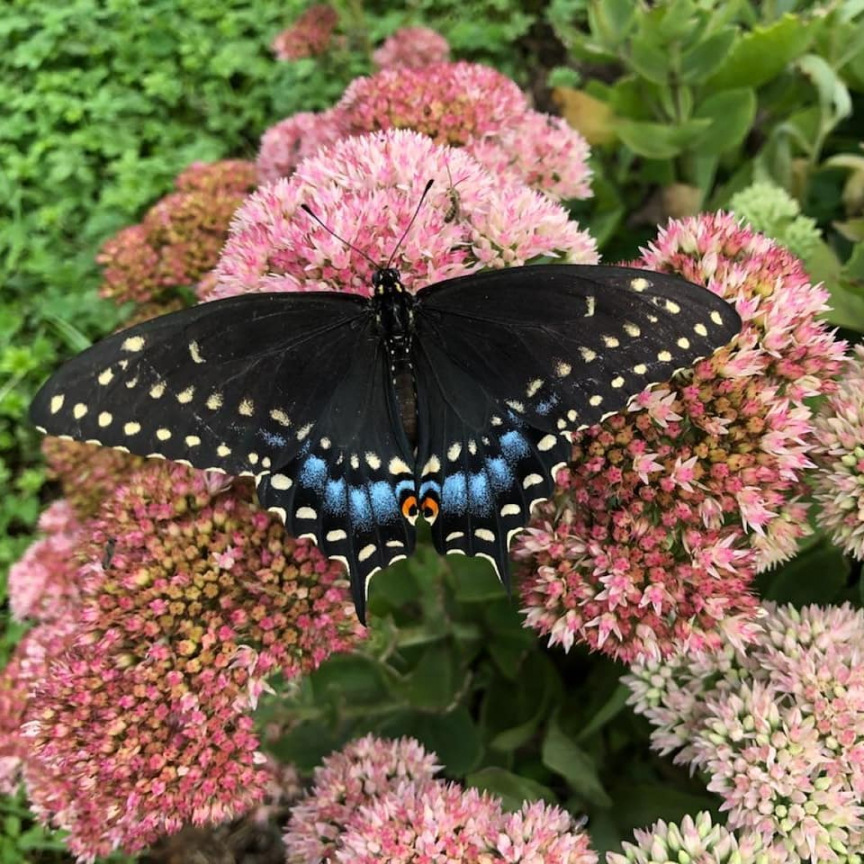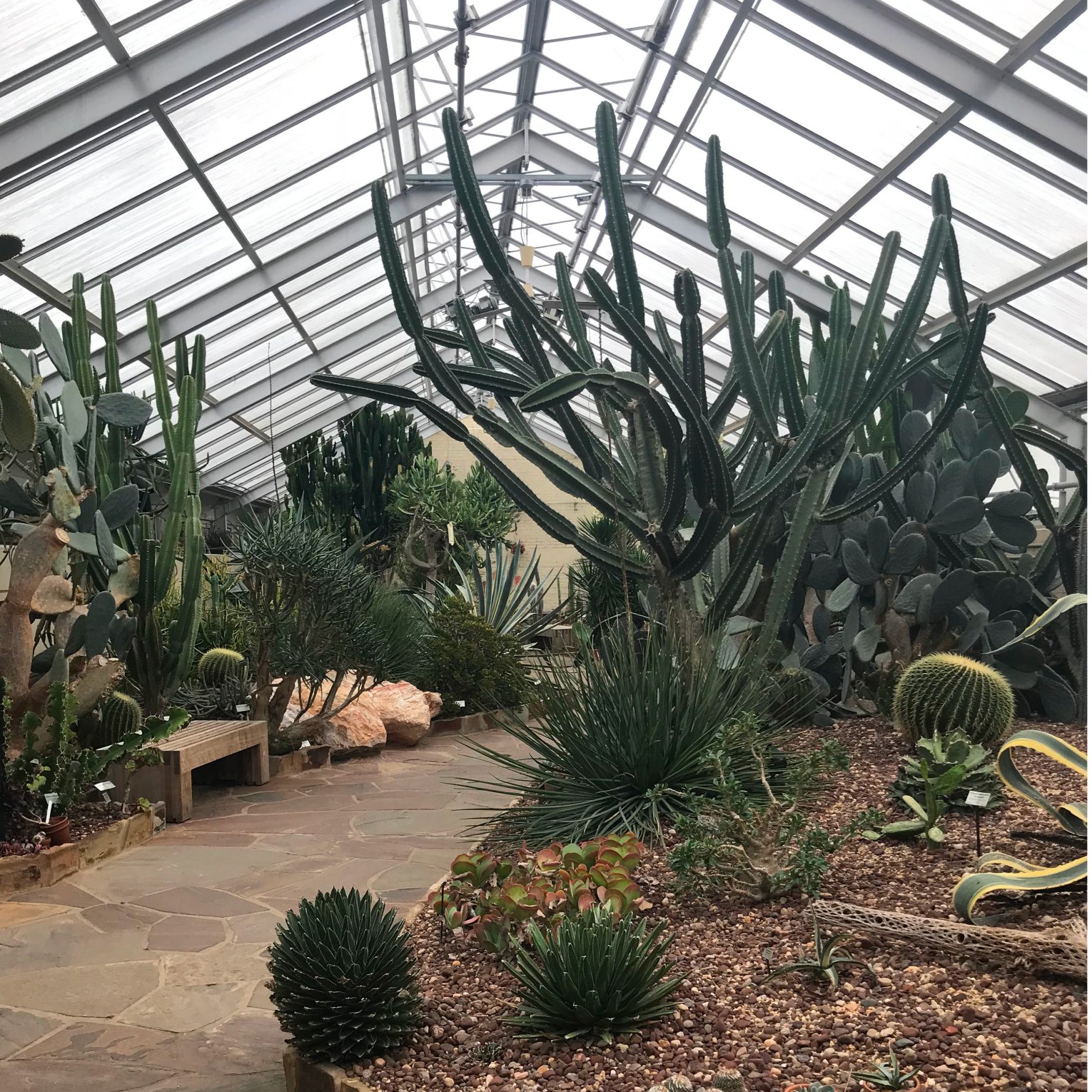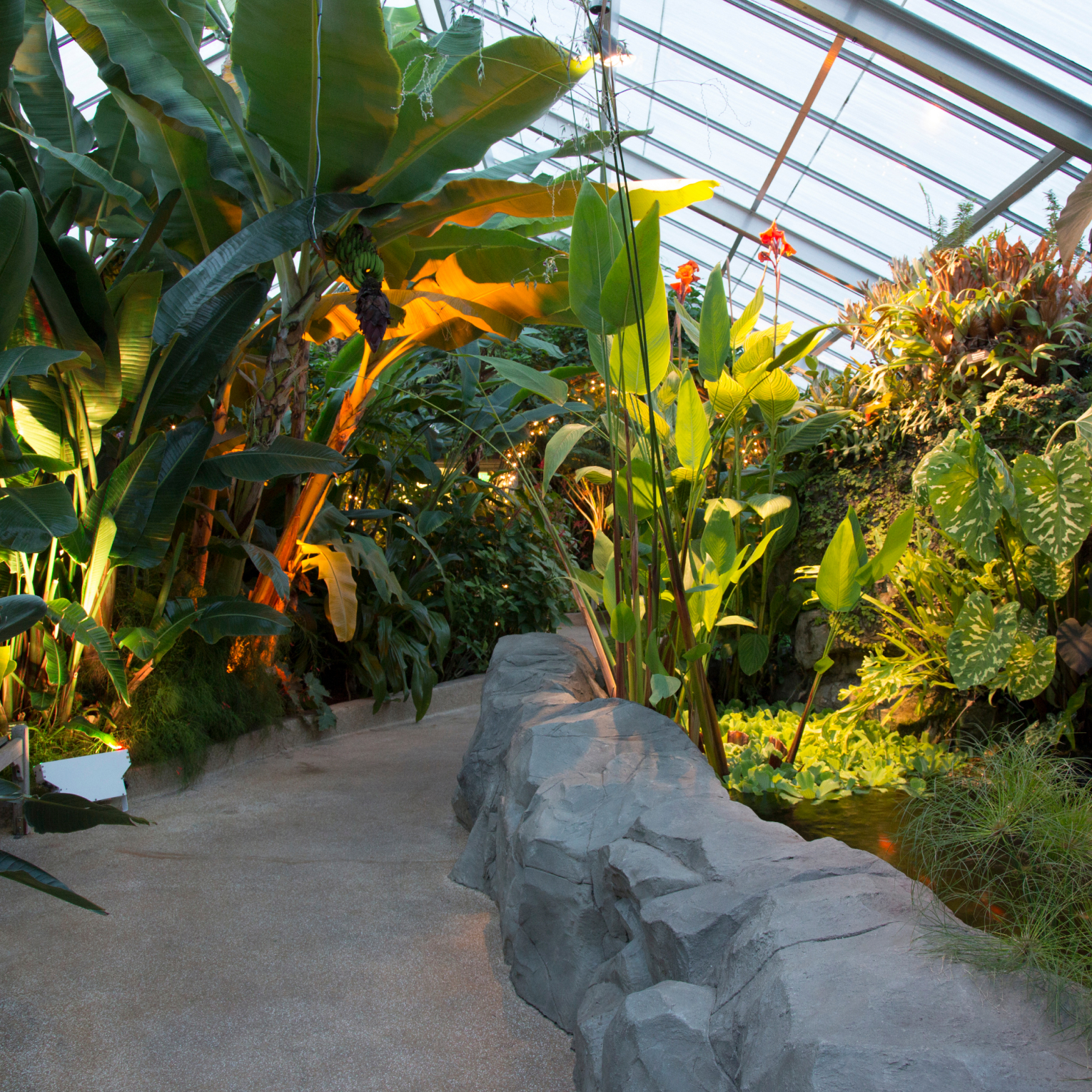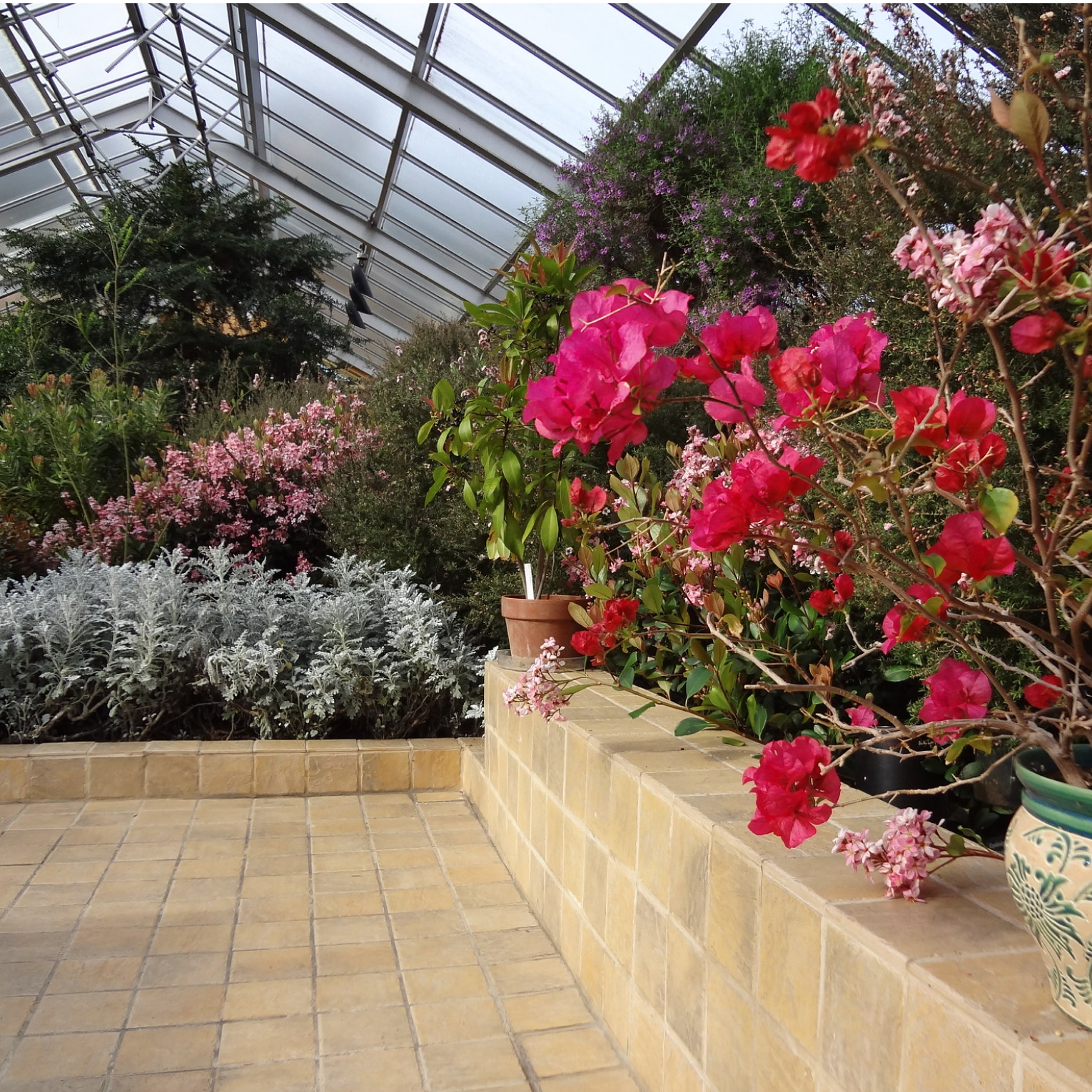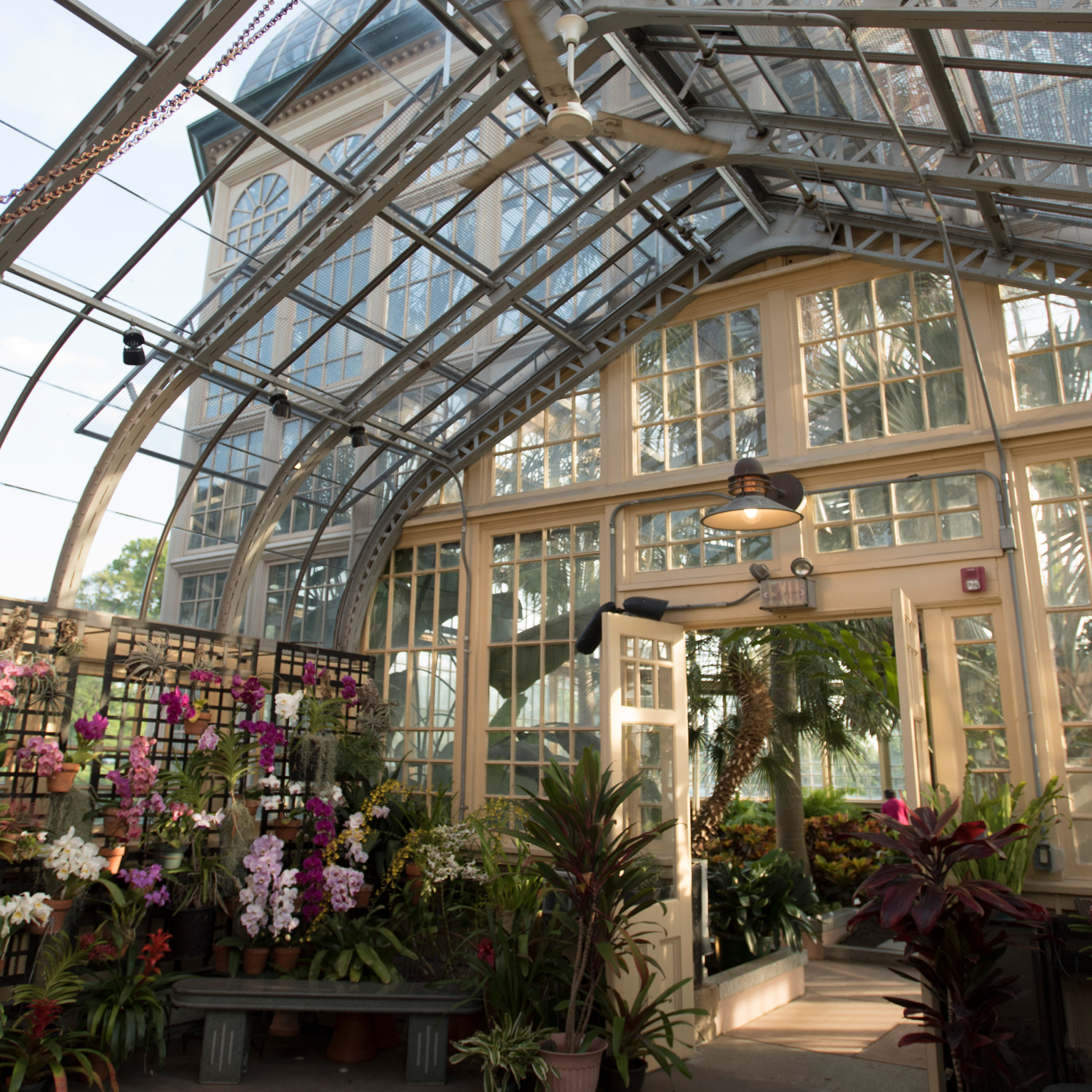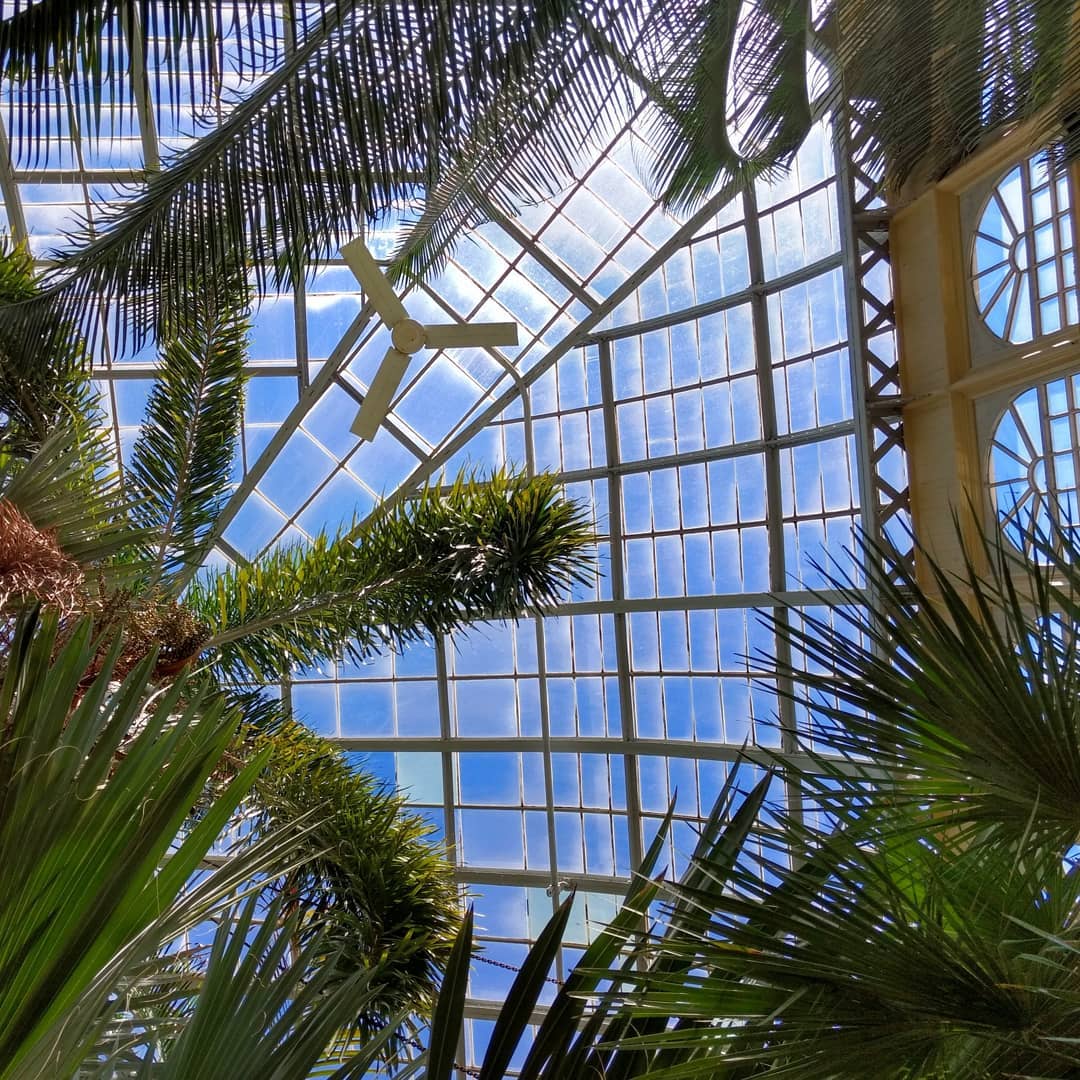Outdoor Gardens
Discover the charm of the Outdoor Gardens, spanning half an acre and adorned with over two dozen curated planting beds.
Although beautiful year-round, peak season is late May through late October.
Our designs showcase a display of tropical plants, grasses, and vibrant annuals that paint the landscape with a palette of colors. Native plants can be found amongst the perennial beds. As you explore the Outdoor Gardens, be on the lookout for our pollinator friends – bees, butterflies, and dragonflies.
Featured in the Outdoor Gardens
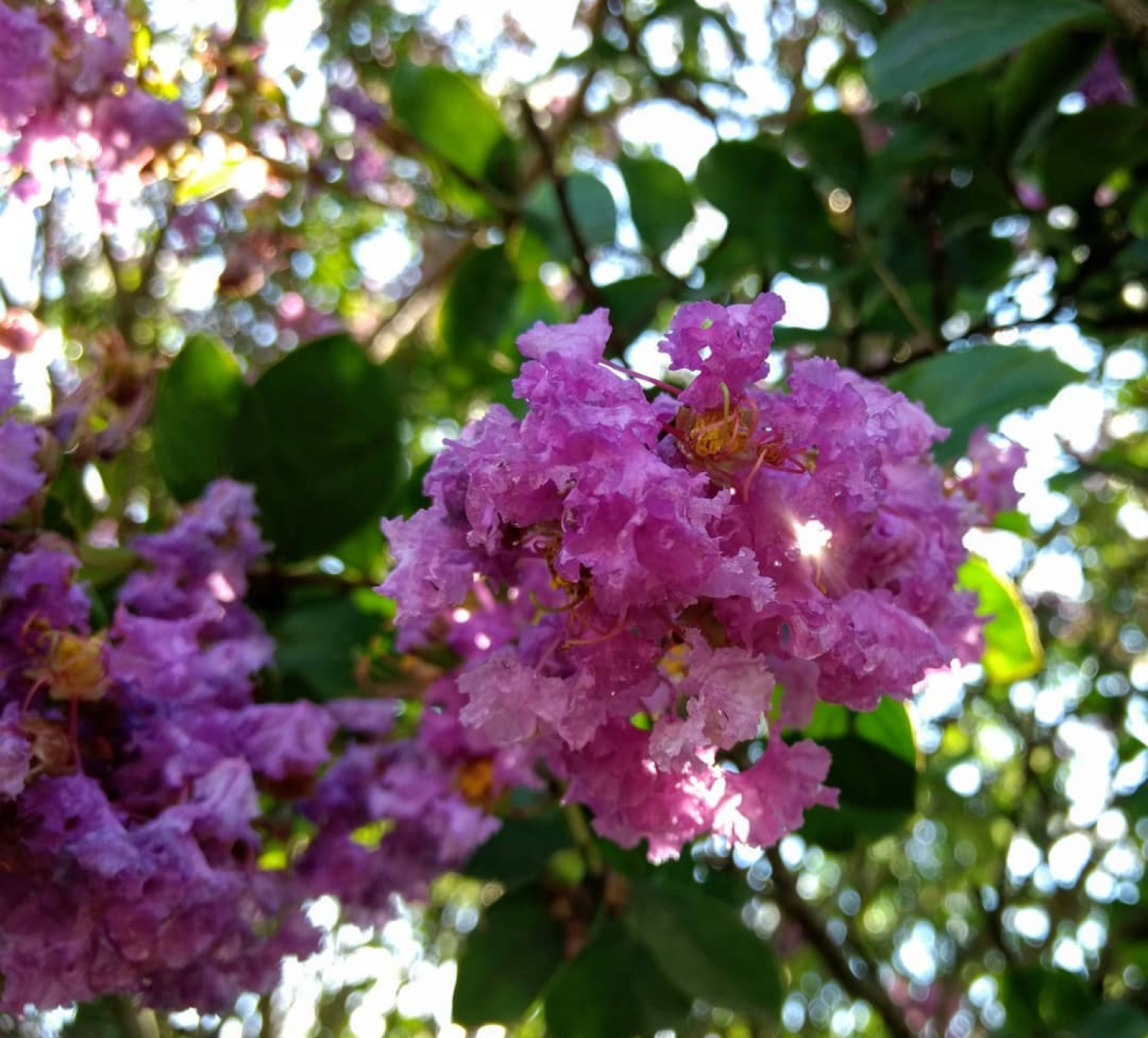
Crape Myrtle
Lagerstroemia
blooms summer to fall
Crape myrtles are chiefly known for their colorful and long-lasting flowers, which occur in summer. Most species of Lagerstroemia have sinewy, fluted stems and branches with a mottled appearance that arises from having bark that sheds throughout the year.
The leaves are opposite and simple, with entire margins, and vary from 5–20 cm (2–8 in). While all species are woody in nature, they can range in height from over 30 m (100 ft) to under 30 cm (1 ft); most, however, are small to medium, multiple-trunked trees and shrubs.
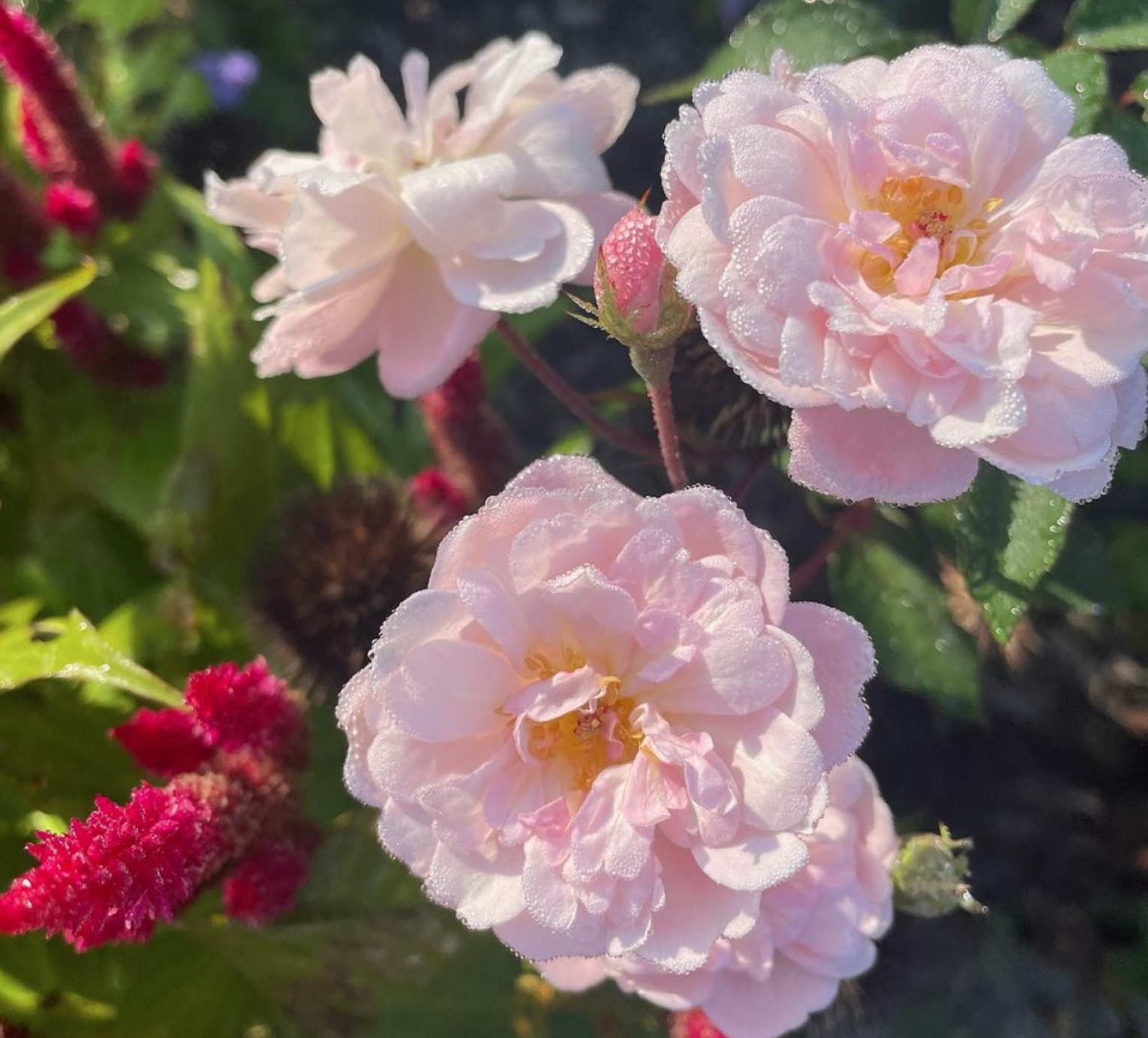
Marie Pavie Rose
Rosa polyantha
blooms in summer
The ‘Marie Pavie’ is a nearly thornless, graceful rose bush, low growing (approximately 2 ½ feet), with dark healthy foliage; the perfect setting for its small/medium soft pink buds that open to beautiful, fragrant, and prolific flowers. This rose is a polyantha, which is a Greek term meaning many flowers.
Established in 1888, the same year as the Conservatory. Cultivated in France.
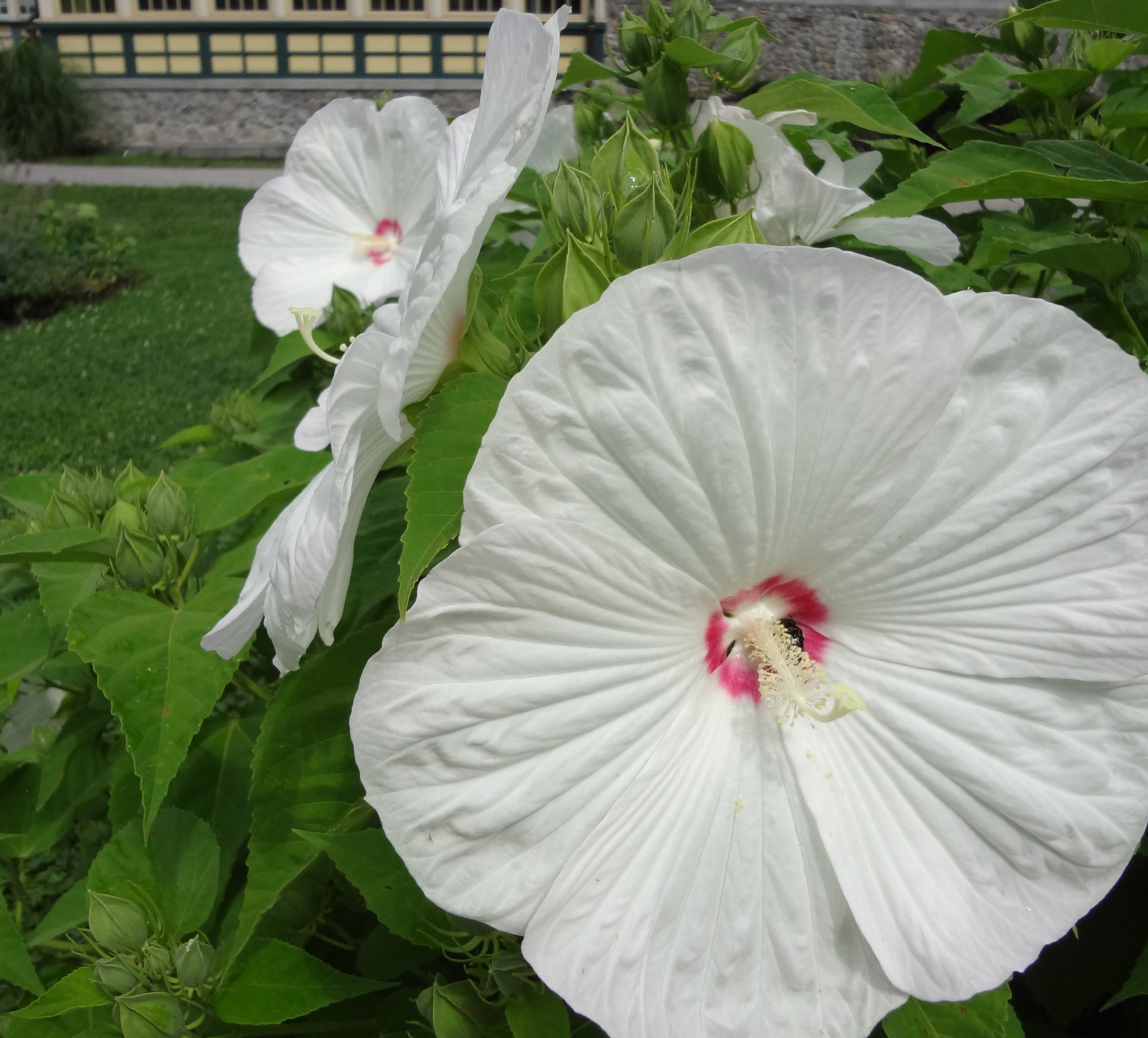
Hardy Hibiscus
Hibiscus moscheutos
blooms summer to fall
Also known as swamp rose mallow, hibiscus is a vigorous, sturdy, rounded, somewhat shrubby, hairy-stemmed, woody-based perennial of the mallow family.
It is native to wet spots (marshes, swamps, floodplains, river banks, moist meadows, and moist woods) from Ontario and Massachusetts south to Ohio, Indiana, Alabama, and Florida. Showy, dinner plate-sized, hollyhock-like flowers (each to 4-6” diameter) have five overlapping white, creamy white, or pink petals with reddish-purple to dark crimson bases that form a sharply contrasting central eye. At the peak of bloom, a large plant can produce 20 or more flowers per day.
Our Garden's Sundial
The Sundial in the Garden is an unusual, multi-faceted sundial (also known as a gnomonic block) created by Peter Hamilton of the Guilford and Waltersville Granite Company, and was presented to the City of Baltimore around 1890. It was originally crafted out of granite but has since been covered in bronze.
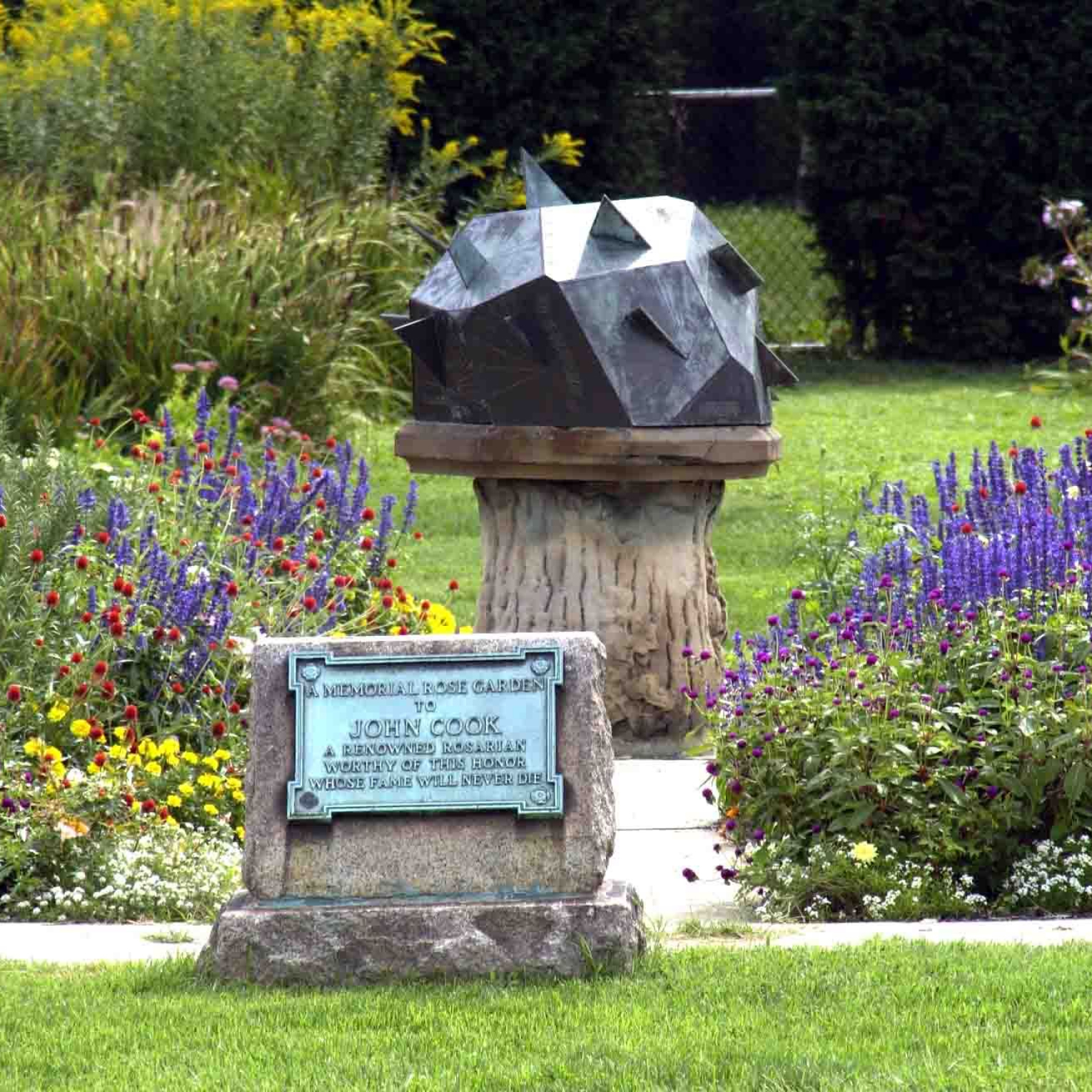
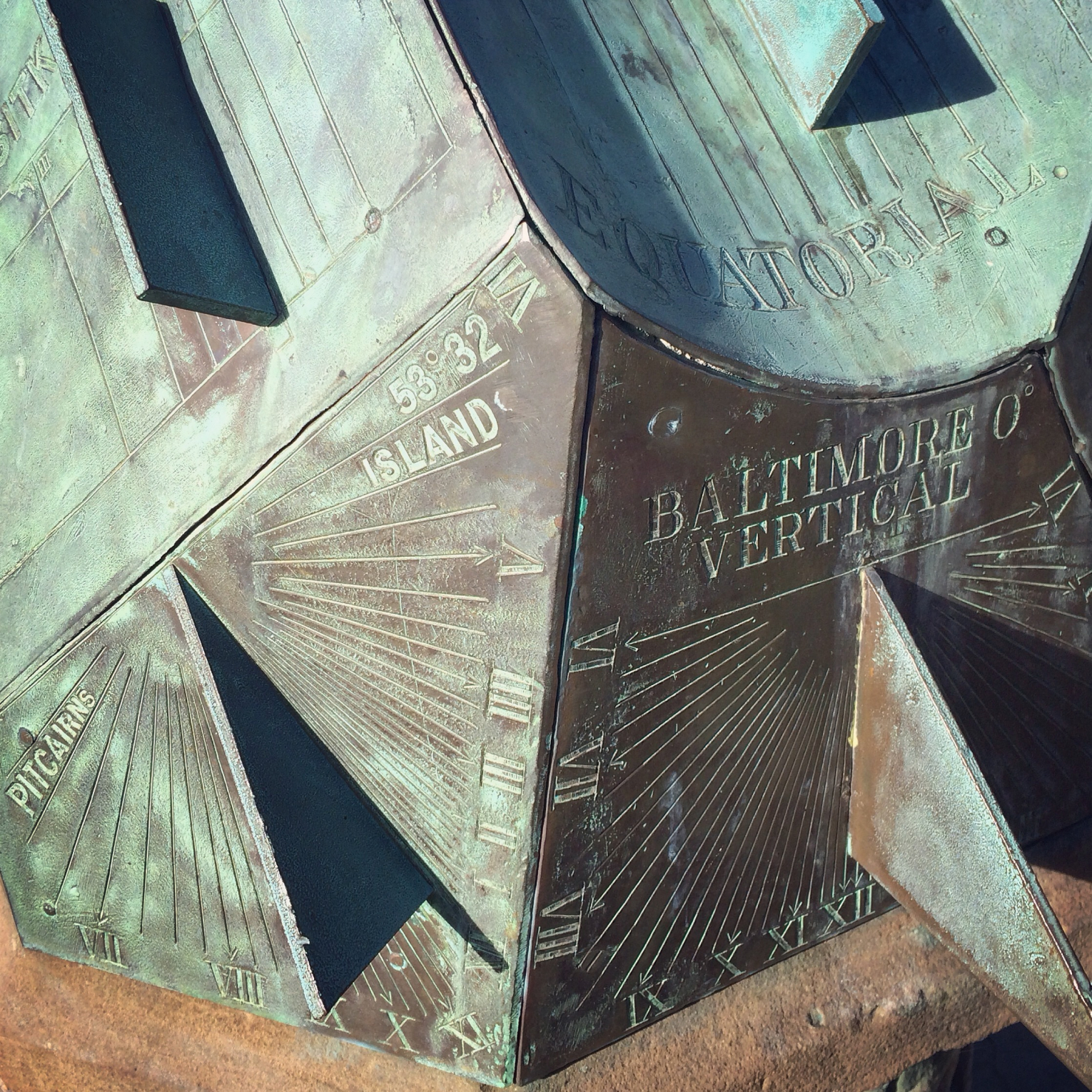
The sundial records the times for Baltimore, Cape Cod, Rio de Janeiro, San Francisco, Pitcairn Island, Sitka, Honolulu, Jeddo (Tokyo), Calcutta, Cape Town, Jerusalem, Fernando Po, and London.
The time recorded on the dial is not in sync with today’s clocks. Before standard time was enacted in 1884, people used solar time. This meant that noon on Cape Cod arrived earlier than noon in Baltimore.
Today, especially during daylight savings time, the dial can be off by as much as an hour and 45 minutes.

